[Camino Portuguese Day 0] Lisbon to Santarém
Half-day in Lisbon! Train strike! Skipping ahead. Am I a cheater?
Wednesday, 4/19/23: Lisbon to Santarém [75+ km, by train]
video coming soon
I woke a few times last night, confused by why I’m surrounded by plywood. I ultimately laid there until 8 am, when it felt appropriate to get up. It’s tricky to assess the outside world from inside a windowless room. Lucky for me, it’s bright and sunny outside today.
Stepping foot in Europe felt oddly familiar. In the back far reaches of my mind, there were some hints of my bittersweet time in Madrid back in my 20s. I had planned a whole day, but it’s not quite going as planned. I thought I’d explore a little, then decide if I wanted to stay an additional night in Lisbon or catch a train north.
This morning, I walked from the hostel through Arco da Rua Augusta, to the beach/pier at Cais das Colunas, then along the waterfront and sat for a few minutes (my attempt at meditation and being fully present) just watching the waves lap the shore. Very different vibe in the morning than at night. There was an influencer girl, all dressed up, getting some fancy photos taken. Ah, a reminder of our modern world.
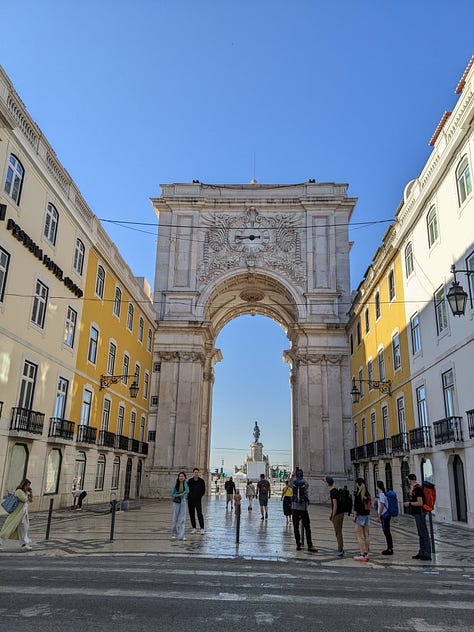
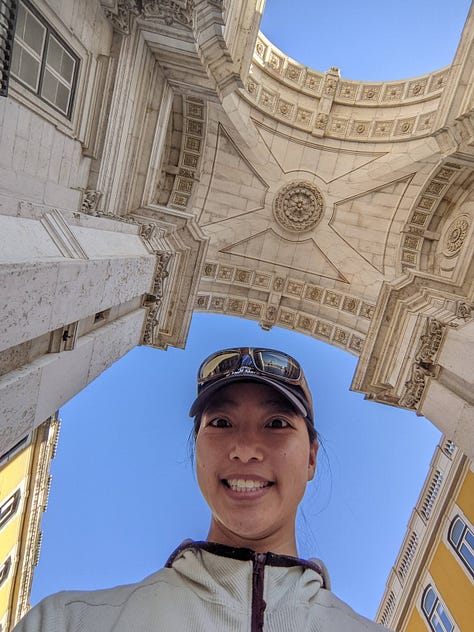

Cais do Sodre is a major transport hub: trams, metro, ferry, buses. I waited 30 minutes for the 15E tram/bus to get to Belem. Three buses came all at once and I got pushed and squeezed onto the third. It’s ok. More spacious that way. Everyone’s in a rush. It’s weird to be the one whose not. Google Maps failed here because it turns out I could have taken pretty much any of the other buses to the Belem area then walked a short few blocks, but I stubbornly followed the directions to wait for 15E. It was a longish drive out through an industrial zone mixed with old school residential houses.
The Torre de Belém was built in the 16th century, during the Renaissance. It’s a four-stories tall fortification tower on the Tagus River, built out of limestone in the Portuguese Manueline style. It served as a point of embarkation and disembarkation for Portuguese explorers and as a ceremonial gateway to Lisbon. It’s been a UNESCO World Heritage Site since 1983. I didn’t go inside, and opted to do a little walking on this beautiful day.


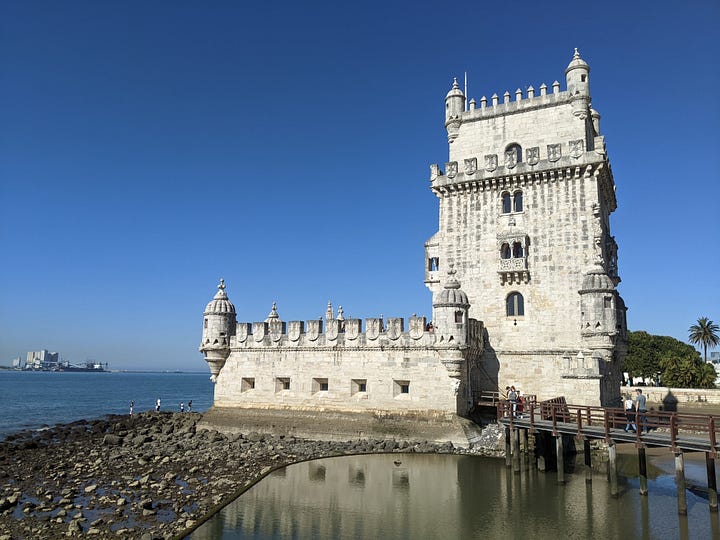
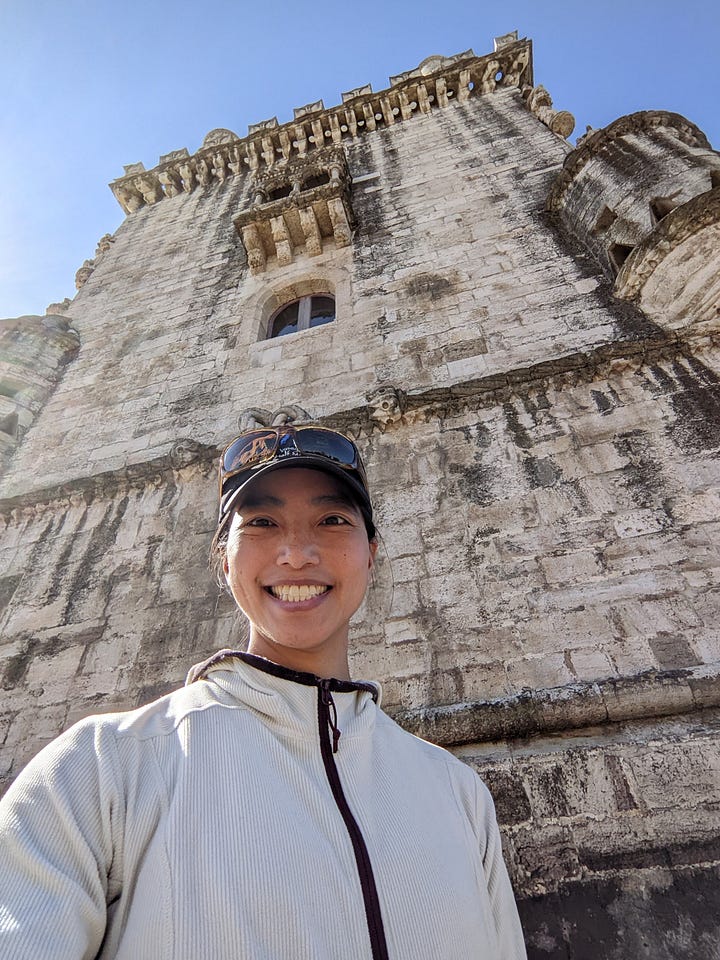
I was going to make two pastéis de nata stops (also known as pastel de nata, Portuguese egg custard tart pastry, 蛋撻), but ended up getting just the original pastéis de belém. I didn’t like the crust, very flakey like baklava. The filling was overly sweet in my opinion, but they gave me a packet of cinnamon and sugar to add at my liking.
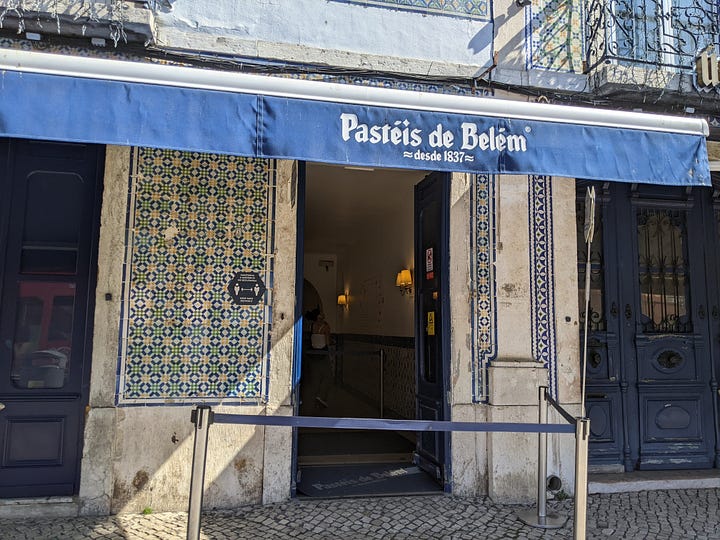
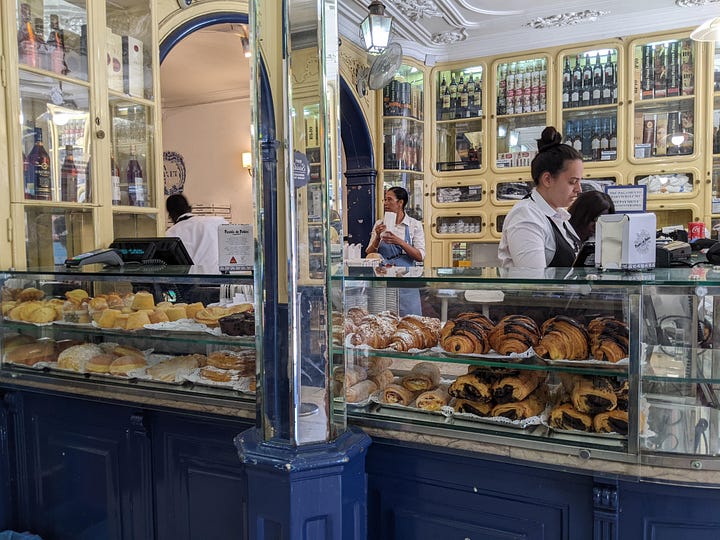
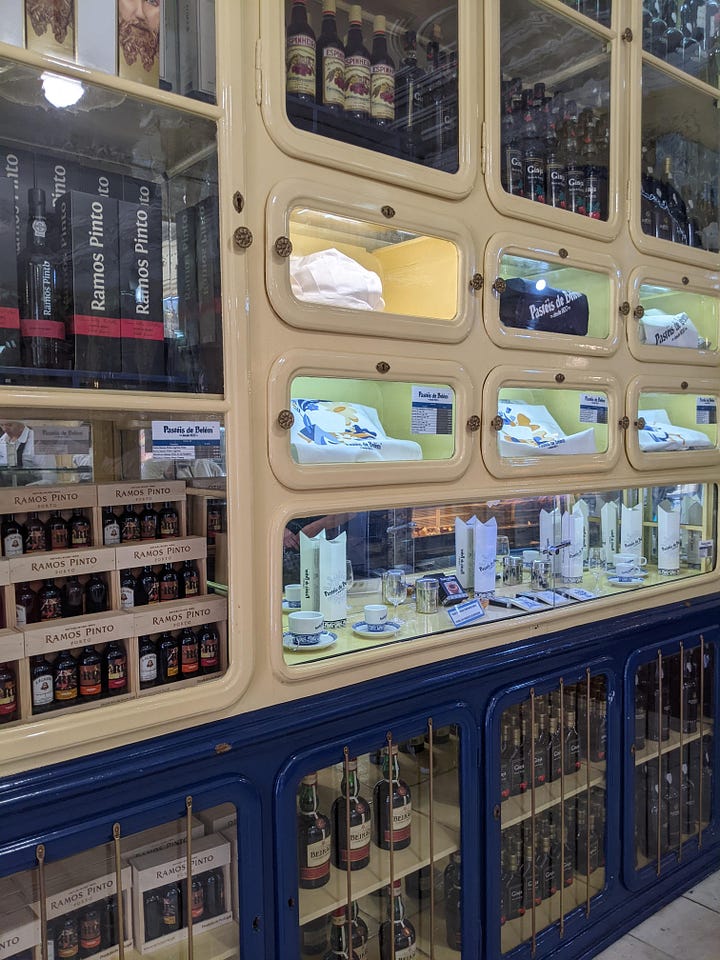
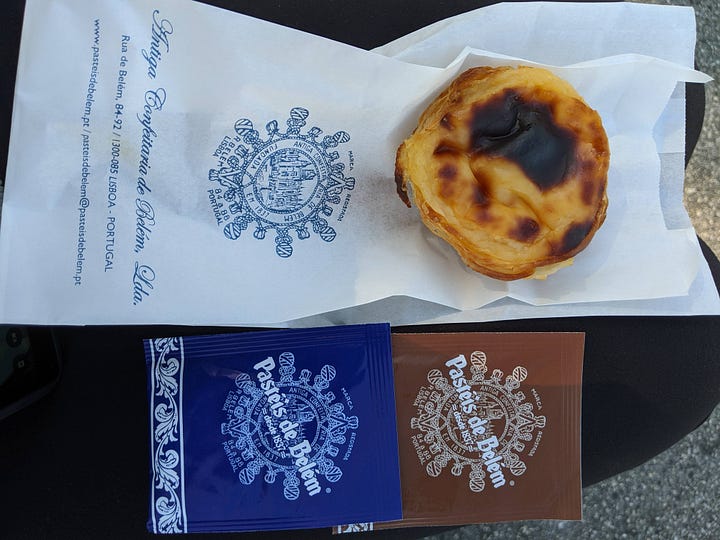
It was a lovely, somewhat desolate walk, between the Tower and the Jerónimos Monastery. As seen from the exterior architecture, it’s beautiful and elaborate. Its construction was started in the 1500s, during Portugal’s Age of Discovery, and took over 100 years to complete. The Manueline architecture style is named after King Manuel I (Manuel the Fortunate), who is known for establishing trade empires with Brazil and across Africa and Asia. He sponsored Vasco da Gama on his voyage that “discovered” the sea route to India, which led to Portugal's monopoly on the spice trade. By the time I approached the Monastery, it already had a long line that didn’t seem to be moving. If I visit Portugal again as a tourist, I’ll set aside a whole day to tour both the Monastery and Tower.
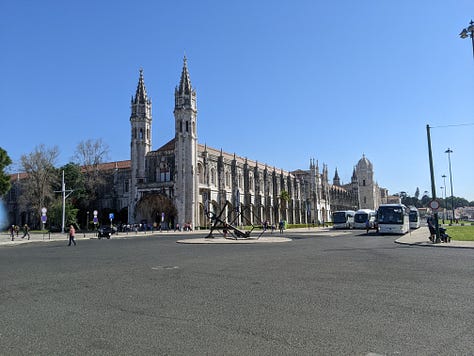
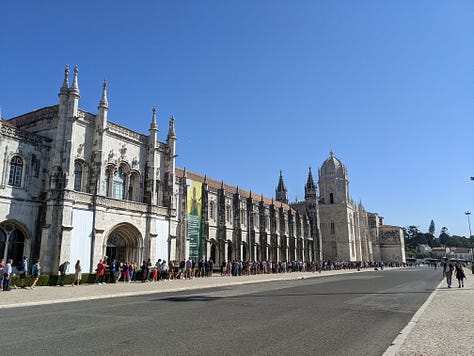
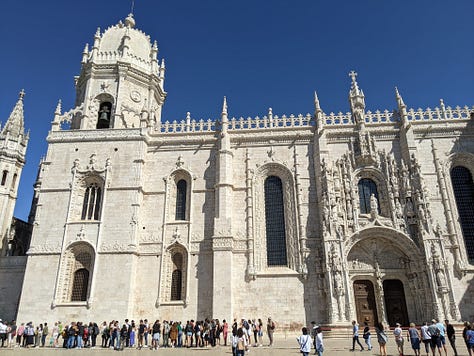

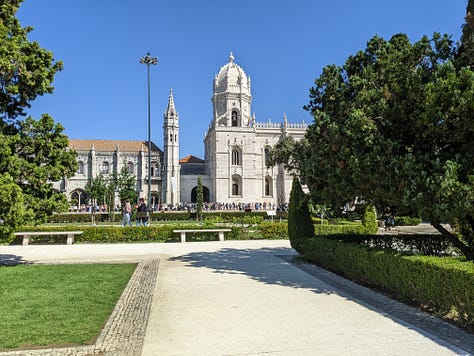
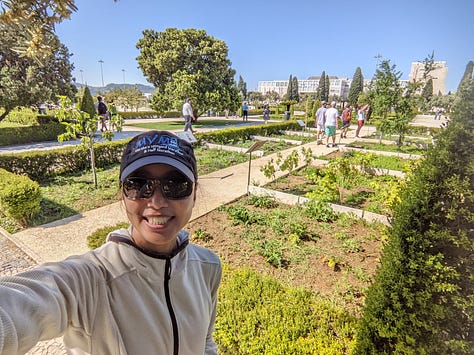
I hopped on a bus back to Cais do Sodre, where two officials came aboard to check ticket validity. From Cais do Sodre, I planned to take a commuter ferry across the Tagus River to Cacilhas, but the ticket machine rejected me. Turns out I needed the other type of all-day pass. I’ll do it when I return to Lisbon.
Pivoting plans, I figured I’d wander around the historic center some more and see more castles and viewpoints. Time to go uphill. But first, a bruschetta break. It was getting so hot out, and things felt so much farther and hillier. But onward. I stumbled upon the Mural Graffiti Fado Vadio, which incidentally exited back at the place where I had the bruschetta.
Fado Vadio translates to “bohemian, vagabond or loafer.” Fado is a music genre traced to the 1820s, characterized by mournful tunes and lyrics, but can be about anything. It’s popular in Lisbon and Coimbra, another city that’s on my Camino. There are specific structures fado typically follows, and continues to evolve over time. I did not attend a fado show, sadly. Maybe next time.
So I didn’t make it too far lol. It’s hard to get lost on purpose in the heat. Another path took me to some gated residential areas, but I could peer through the gates to see the overlooks of the red roof tops of the city below.
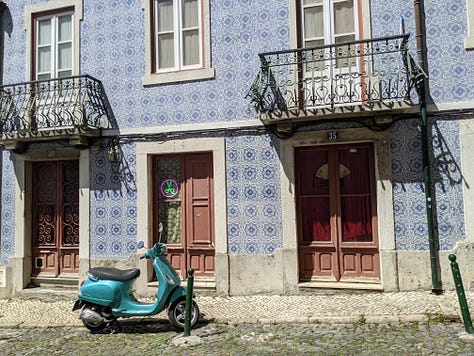
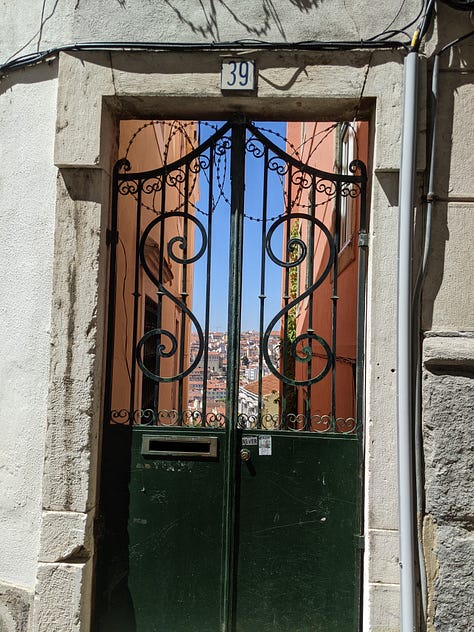
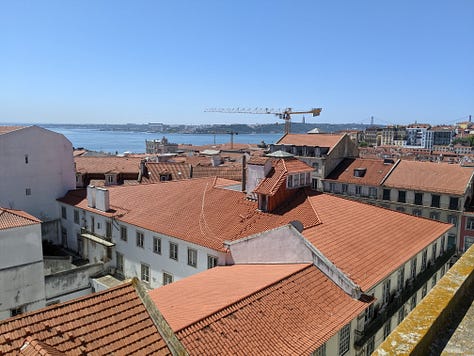
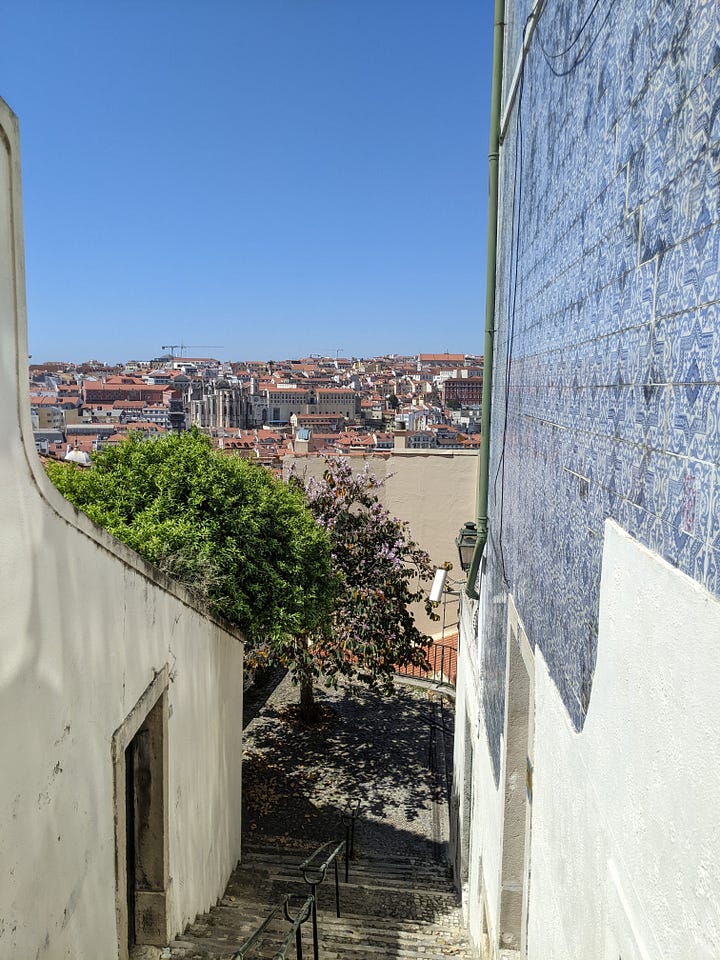
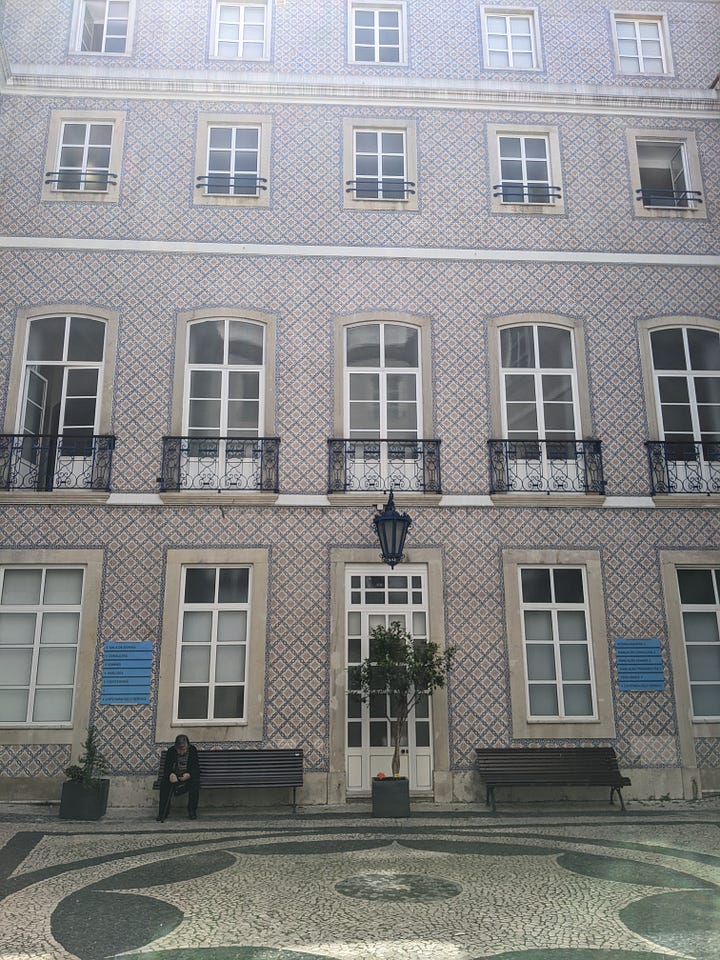
After my mundane and pleasant morning, I decided to give into my anticipation. I’m antsy to start my walk. I’m not able to be fully in tourist mode, knowing I have this epic journey ahead of me. No need to stay in Lisbon much longer.
The Camino forums weren’t super clear about where to stay coming out of Lisbon. It sounded like the first 100 km section has very few albergues to start, and some permanently closed during the pandemic. I didn’t want to risk it, because not having a place to sleep is something I find unsettling. I decided to skip the first 2-3 days out of Lisbon (~75-80 km) by taking a train to Santarém. I look up the train schedule and decide to leave after lunch, giving me plenty of time to get to the next town during daylight hours. It required shoving the judgment out of my head: Am I cheating?!
I got my bag from the hostel and took the Metro to Station Santa Apolónia to catch a train to Santarém. I was right on time to take the 1:45 pm train, and if I missed that, then the 2:45. But because of a strike, a number of the regularly scheduled regional trains were canceled. I had no idea what was going on, and the agent was getting a tad frustrated. He kept saying: “Suprimido!” When I kept saying “El próximo tren, por favor!” He put me on the 3:30 IC train (twice the price, half the time). A few more hours to kill. At least, I’d get me to Santarém with enough daylight to find the alberuge.
Great opportunity to explore! I’m really not far from the Tile Museum, which was on my list of touristy things to check out. I already walked halfway there while munching on an ice cream cone. Past the road construction and quiet old streets were three huge cruise liners. What a juxtopositon. I was tired, and having a hard time summoning the energy to continue. It got really hot in the sun. I am noticing that I packed too much. Already regretting it. I wish I had brought a small backpack or tote bag. I’m relying on my jacket pockets to carry things, and it gets too hot to wear on top. I return to the station to people watch, and journal for an hour.
Finding my assigned seat on the train was an experience. Luckily, an English-speaking stranger stepped in when a Portuguese-speaking lady was raising her voice and repeating something I didn’t understand. You see, there’s a technique to finding your assigned train set. The lady made it clear that I’m NOT in first class. The trains are numbered. Mine was 21, which I now know stands for Second class, First car. The seats are also numbered. But all the seats inside a given train are the same. So the key is to know which car you’re assigned to.
I wasn’t the only one confused. Once I located my seat, an American couple in front of me were in the wrong seats. A local person was trying to explain that they’re in his seat. The couple were adamant (dare I say, pulling the embarrassing American privilege of righteousness tone) that they’re correct. But once the local patiently explained to them how to read their ticket, they left in a huff without thanking or apologizing. I am embarassed.
The train took only 45 minutes and made 3 steps between Santa Apolónia and Santarém. Perhaps these train stops were precisely the towns in which pilgrims would have stayed on this section of the Camino. In all honestly, it didn’t appear as remote as my brain made it out to be when I read the forums. Flying by me were some notable sites that pilgrims have posted on Camino forums, like the cooling towers of an electricity station that at least one pilgrim mistaken wrote on the forum as the “nuclear reactor.” Shit, I could have totally walked this section. And would have been fine. I’m feeling a FOMO for skipping ahead, feeling guilt for cheating.
The Santarém train station is small and quaint. And at the bottom of a hill. From what I could tell, there was no bus to take to the city center. I get to walk southwest and uphill (aka opposite direction as the Camino). It took 30 minutes!
My watch died, no more tracking. Good thing I have so many backup devices! That’s why my pack is too heavy. The walk was rural but the city center has been commercialized. In the main roundabout on the plateau, there’s a big mall.
The first albergue I attempt to find is closed (permanently, since covid). Only N1 Hostel is open, and I checked in at 5 pm. My reference doc said 15 euros including breakfast. My info is dated. It’s now 20 euros and offers only accommodation, no food.
The reception lady was super nice and welcoming. It was so lovely to share my Camino excitement with someone. I asked for a women’s dorm room if possible, and she happily did so. “Don’t worry, I got you!” She lent me a hairdryer, and gave me a tour: where to drop off my key in the morning, the terrace, and then showed me to my room. I’m in a 9-bed women’s dorm room, but only 3 peregrinas tonight: me, a French woman walking Fatima (I don’t yet know what that is, but I nod along), and a Norwegian 19-year-old with flawless English who is on her gap year.
The women’s wing is accessed with a keycard. However, the bathroom doesn’t have a lock. The handles are square but turn like a video game joystick. Beautiful design, but not super intuitive to use. Soap was provided in the shower, which had a handheld and rain head faucets. The hanging vanity had a vessel sink. Very clean look. All modern. I looked at too many bathroom designs last year, and I wish I had the funds to actually go through with the upgrade. I take note of this one to go in my future bathroom inspiration log.
The hostel also provided a fluffy bath towel and a bathmat! Luxury! The bed had a comforter. I didn’t bother using the locker, and just made a pile in the corner with my stuff. The window looked out over a cobblestoned street with peony trees in bloom!
I wander over to the mall to get euros from the ATM (the max allowable is 200 euros/day). The forums say to plan ahead, as not every town has an ATM. I recall from my previous time livingg in Spain that many places, especially small towns, operate strictly on cash. So better be prepared. The grocery store was nice! I got some prepared food, a banana, and a yogurt. They charged 0.20 euros for a disposable bamboo spoon. She understood my faulty Spanish, which I mixed knife (cuchillo) and fork (tenedora) into a nonexistent word cuchilla, when I wanted a spoon (cuchara). Ah crap, I forgot to bring my meal kit silverware. I make a mental note to find a shop selling metal spoons, since I’ll likely be eating yogurt every day.
While having my dinner/snack on the terrace overlooking the red rooftops, I meet people! First is a Finnish girl named Meri, meaning The Sea. She’s an Erasmus student in Oviedo, Spain studying nursing and paramedics. She’s also a writer, originally an English lit major. Loves Virginia Wolf. She’s here on a school trip, and has a desire to walk the Camino. I invited her to come along in the morning. She thinks about it, but she has to go to some meetings or classes in the morning. Maybe this is her seed of inspiration!
There was also a middle-aged woman from Holland. She was wearing only a bath towel. She listened to Meri and I talking about our writing pursuits and asked, “Do Americans even read?” What a strange thing to ask. She says she took a train from Porto today and is also starting her Camino from Santarém. I ask, “Any tips for me?” She says that she never uses maps and has walked several Caminos; she just follows the arrows. Sounds easy enough.
I formally meet the Norwegian girl, Mathilda. She says she’s happy to meet someone young, since she’s only been meeting older women on her Camino so far. “How old is old?” I ask. She responded, “Anything over 40.” Lol. I told her my age, just a few years shy of 40, and she was completely shocked, “No way!”
She swears by Gronze, so I check it out. It’s a Camino website entirely in Spanish, but it has descriptions of each segment of walking, what amenities are in the different towns and cities on the path. Very useful info. I note this Camino gift.
The excitement is on! One more night’s sleep. And then I’m on!
Surprises / Lessons from today
There are fewer well-dressed older women out walking that I expected
There were lots of Indian-owned establishments (restaurants, mini mercados)
English is widely spoken
Lisbon is a very hilly city, yet people seem to walk without any problems
Lisbon is very trafficky, so maybe people don’t actually walk much?
It’s hard to figure out where good food is
The Metro is very clean, as are the streets
Stone/tile roads are everywhere, and they’re a little slippery
I saw a few runners in the morning on the stretch to Belém. Next time.
Wine is still approximately the same pierce as tiny bottle of water
I should prioritize spending coins rather than bills — less weight to carry
I’m eSIM data is down from 5 GB to 3.7 GB of data already
I should prioritize finding supermarkets and eat fruit
Previous Post:
Next Post:




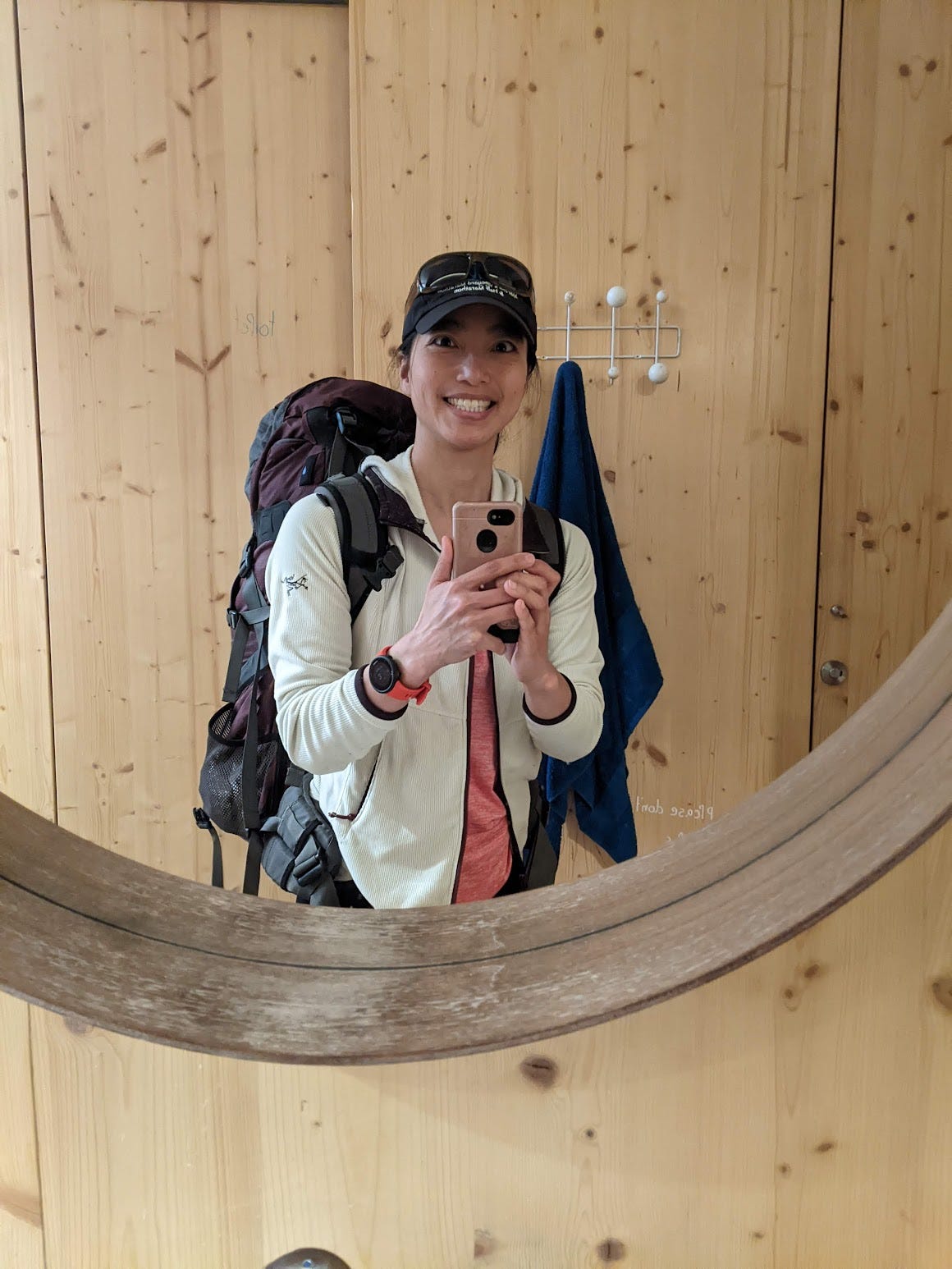
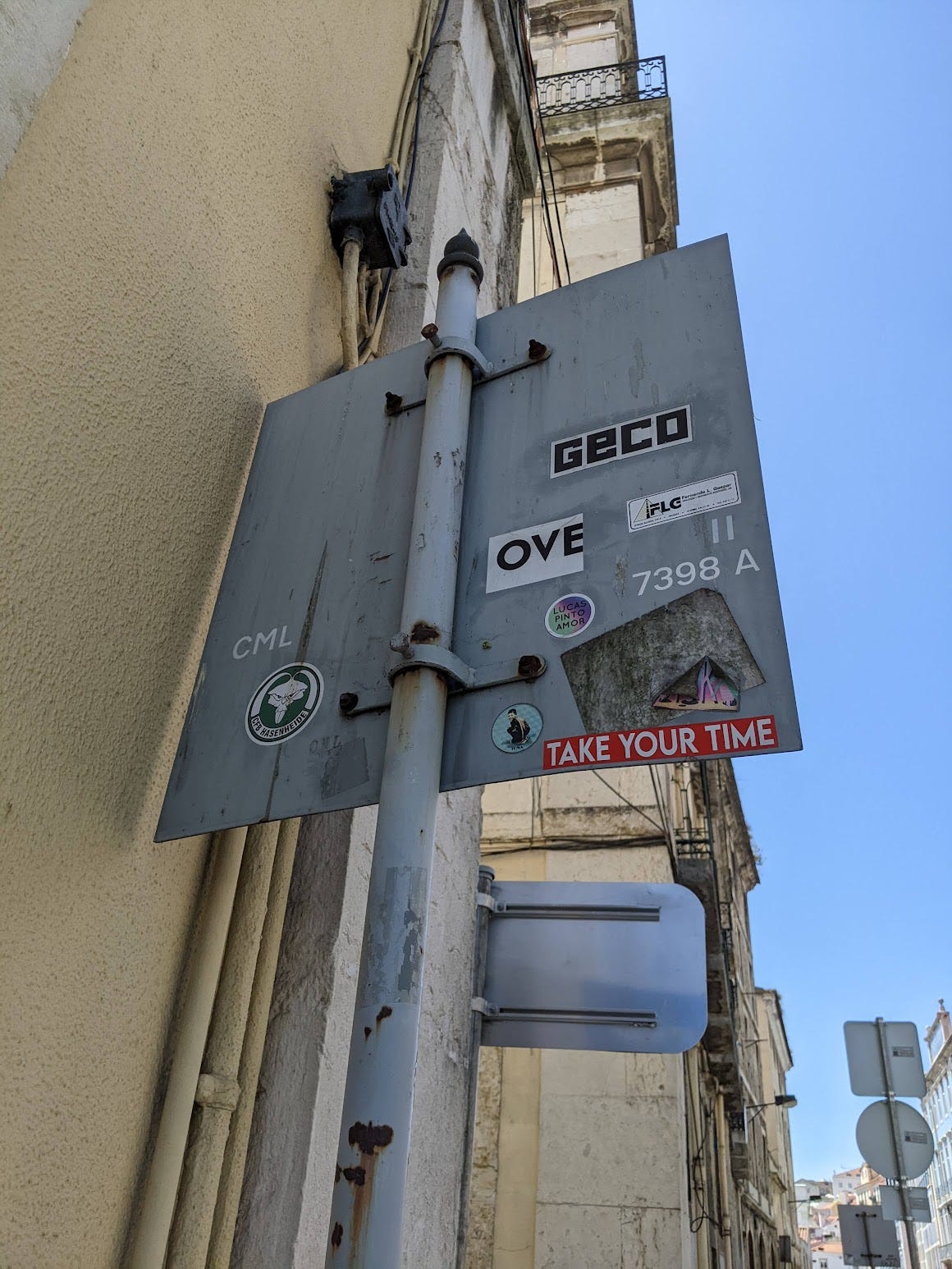
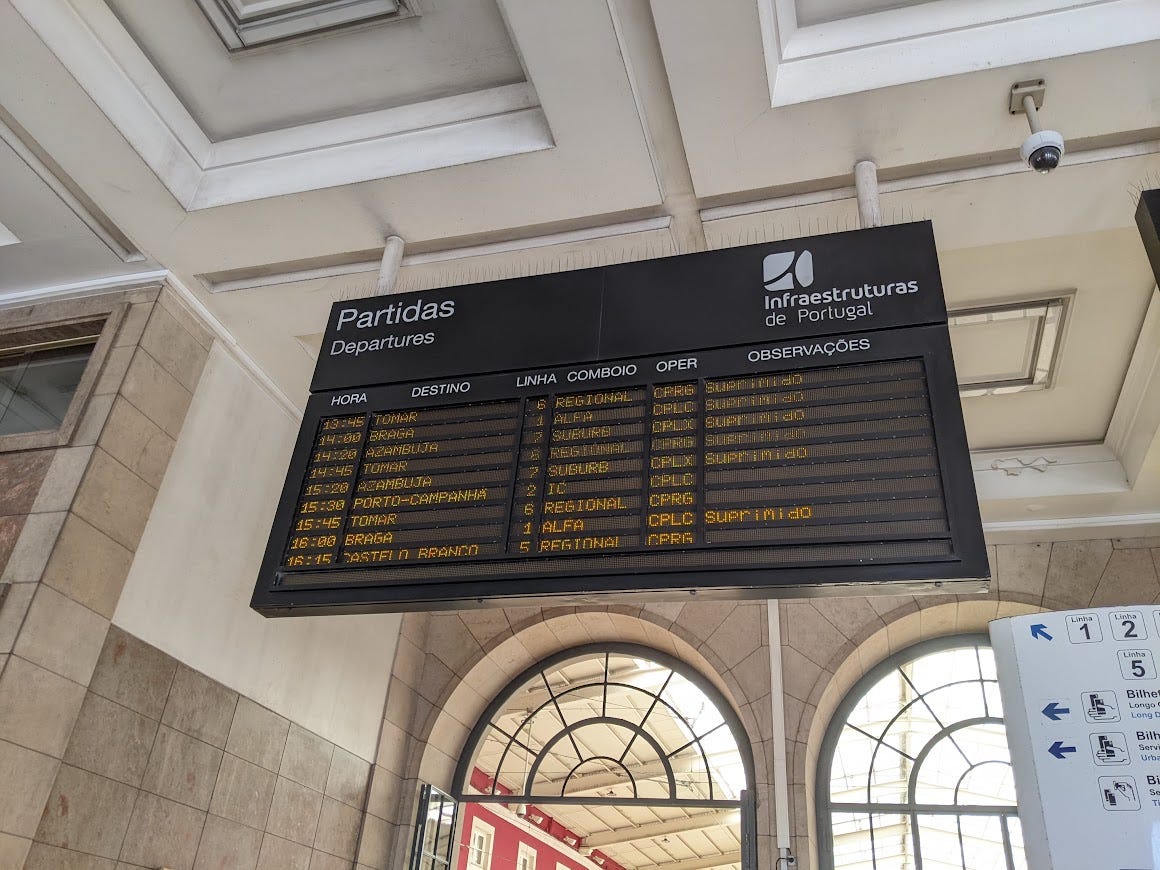
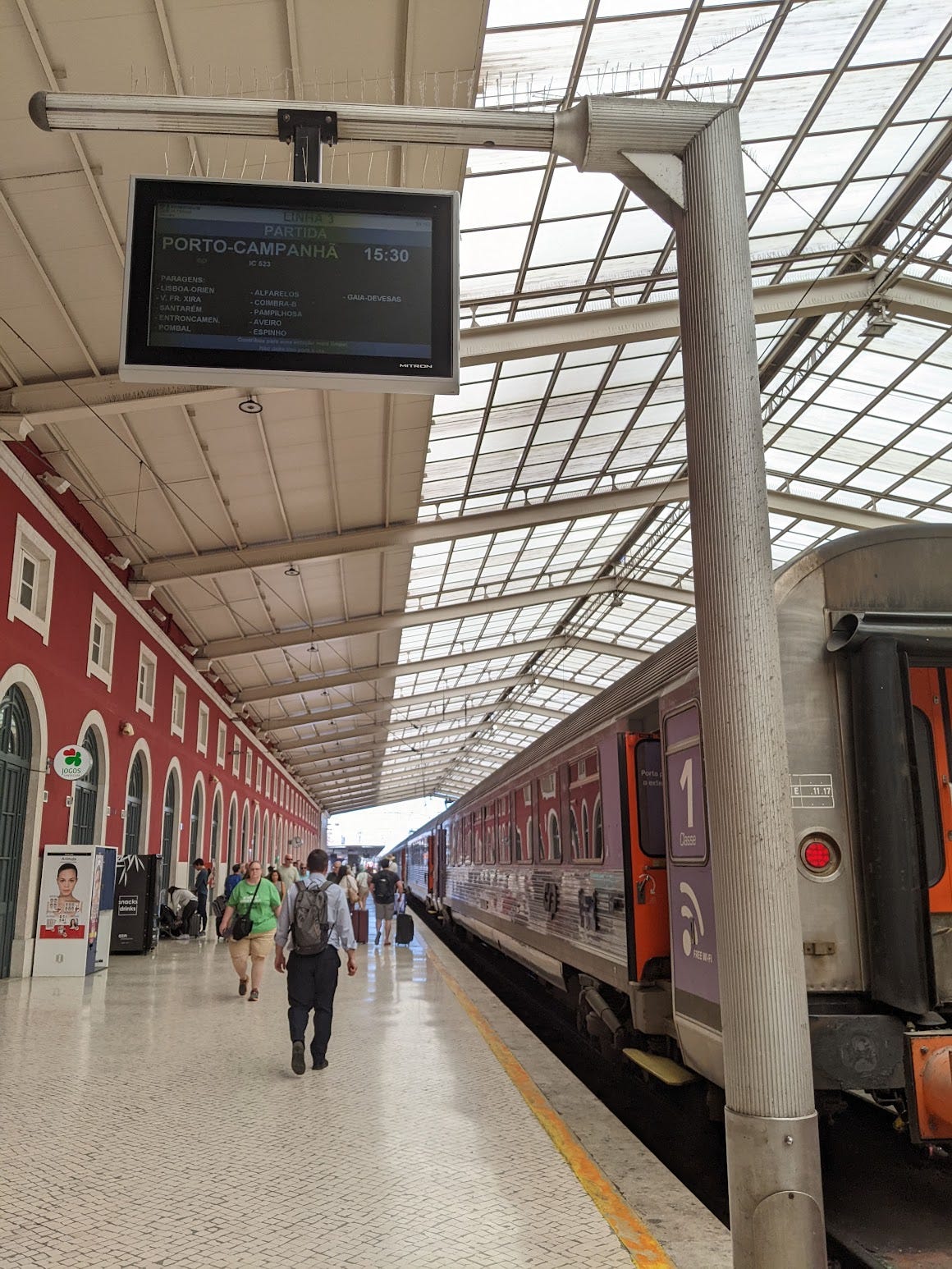
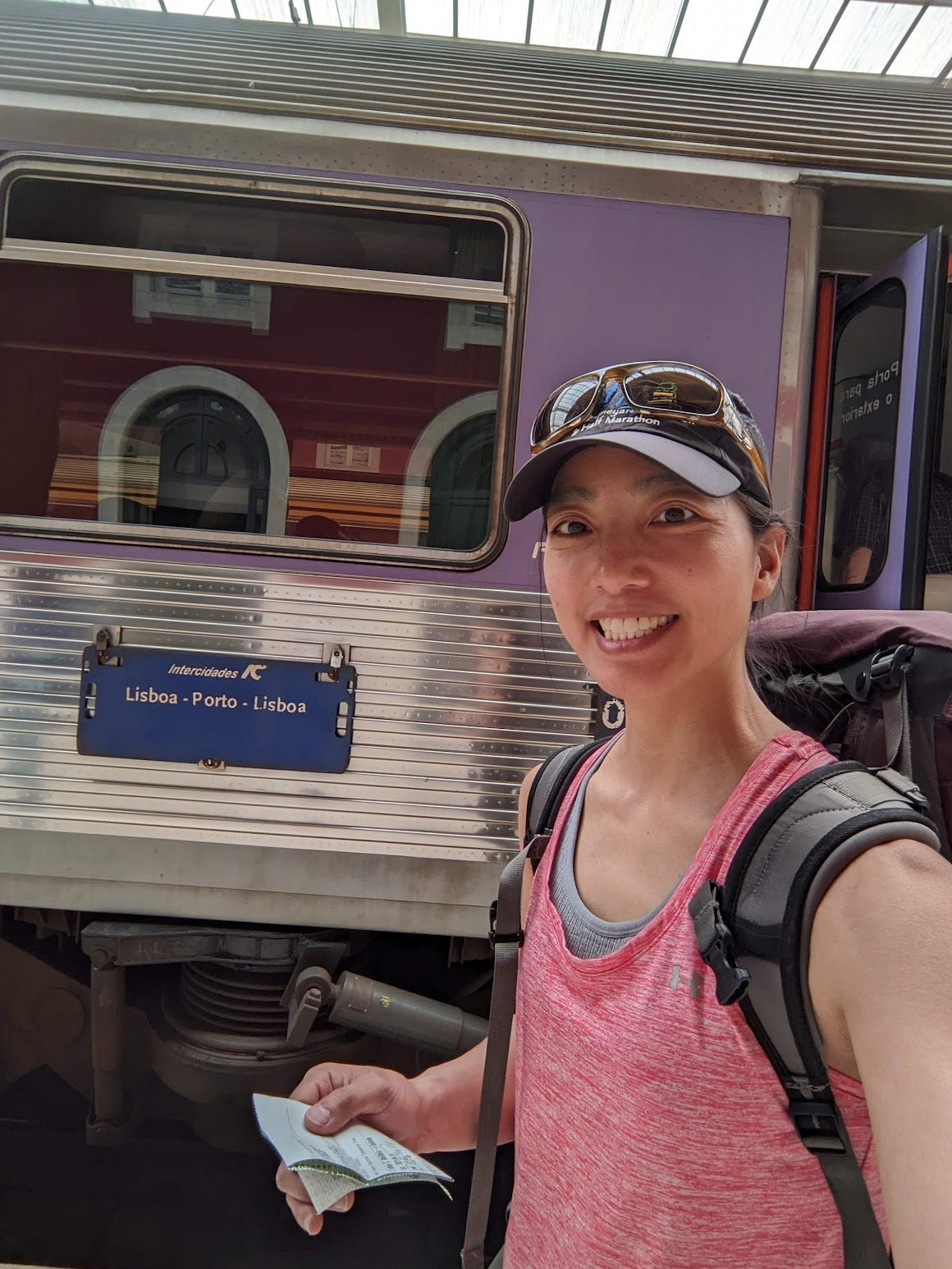
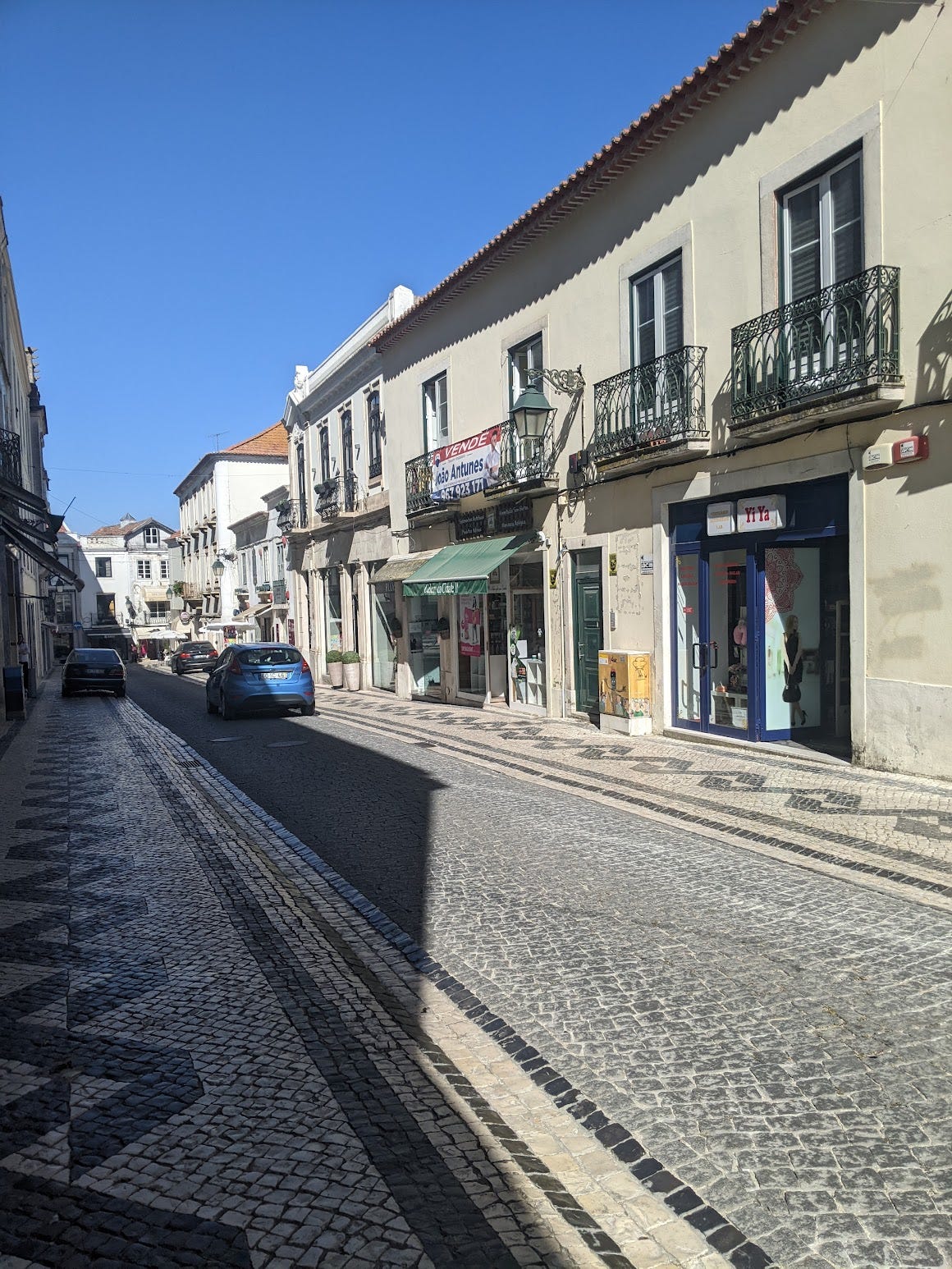
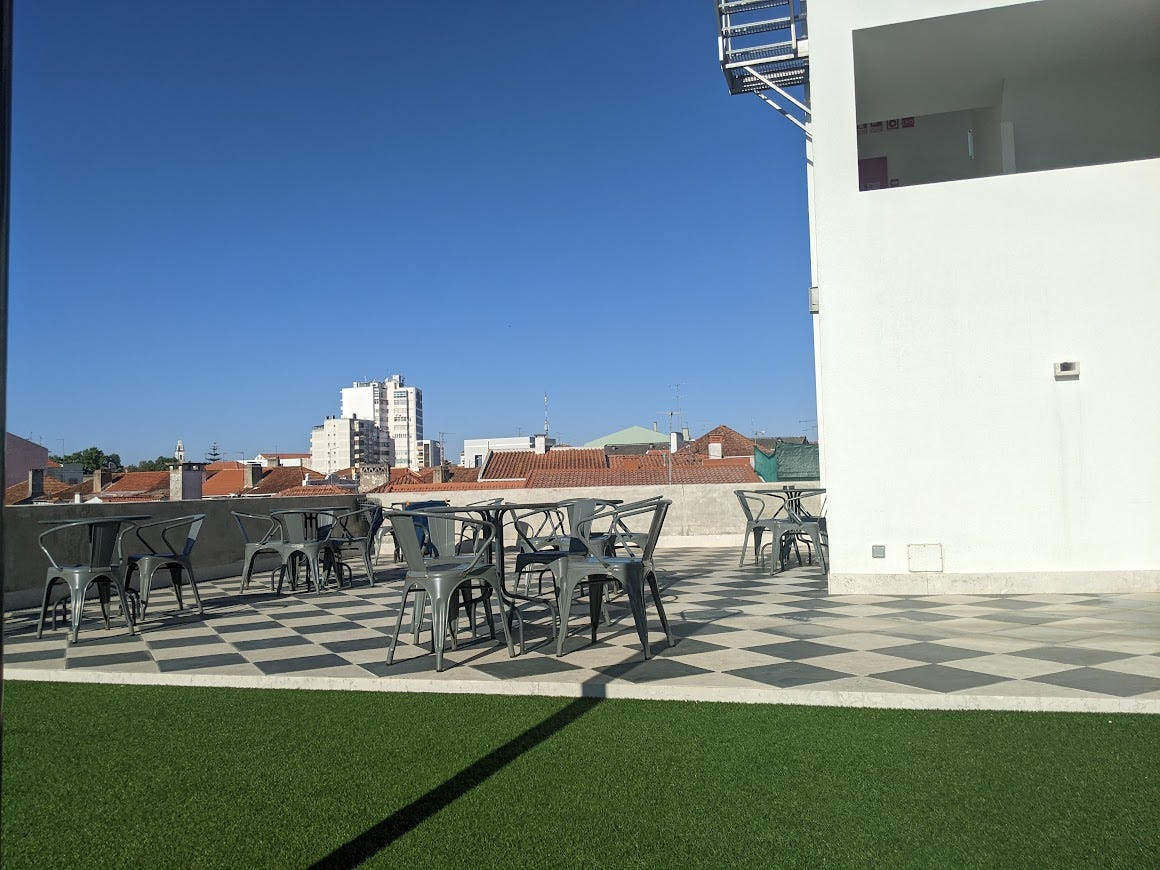
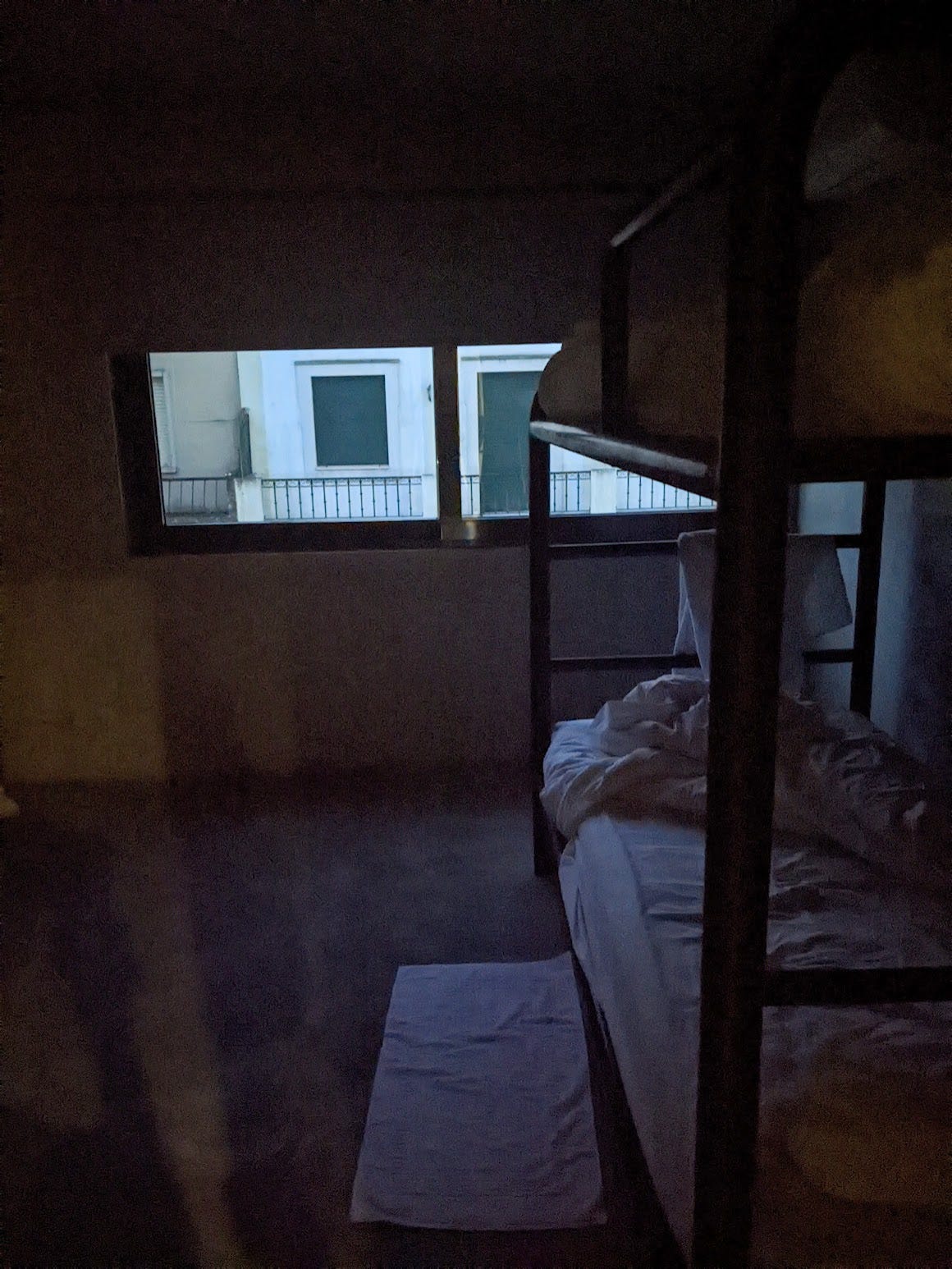
![[Camino Portuguese Day 00] On My Way!](https://substackcdn.com/image/fetch/$s_!eYUC!,w_140,h_140,c_fill,f_auto,q_auto:good,fl_progressive:steep,g_auto/https%3A%2F%2Fsubstack-post-media.s3.amazonaws.com%2Fpublic%2Fimages%2F52171486-f638-4ca4-b64d-937fdd2bf6ef_1160x1546.jpeg)
![[Camino Portuguese Day 1] Santarém to Golegã](https://substackcdn.com/image/fetch/$s_!VRtJ!,w_140,h_140,c_fill,f_auto,q_auto:good,fl_progressive:steep,g_auto/https%3A%2F%2Fsubstack-post-media.s3.amazonaws.com%2Fpublic%2Fimages%2F03393f67-54e8-44c8-9ed0-c05315554cc0_1476x1108.jpeg)